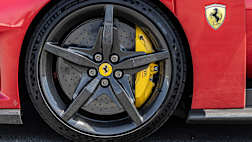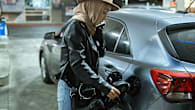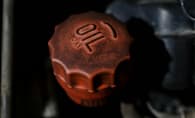Buying a car privately seems like the smarter, cheaper way to go about making what is, for most of us, the second biggest purchase we make in our lives, but when you’re talking about that much money, and handing it over to a complete stranger, how does that actually work?
Once you’ve agreed a price, what you next need to agree on is how to pay for a car via private sale - and depending how much you’ve spent, just handing over the cash probably isn’t going to be that simple. Unless you happen to have your own bank vault swimming with lucre.
You might think that most people avoid this headache by buying cars only from car dealers, but you’d be wrong. According to data from the the Australian Automotive Dealer Association (AADA), a whopping 1,211,484 used cars were listed for sale in the first half of 2024 alone.
And of those, a surprising 67.5 per cent (817,751) were offered via private sale. That was up from a 60 per cent market share in 2023.
With used car prices still quite high it’s not surprising that selling a car privately is popular and that private car sales by owner are up, but people who want to know how to buy a car privately might also be looking for a car loan or finance and that might make going through a dealer seem more attractive.
It seems quite a lot of people are choosing to buy, and sell, on the private market, and thus all of those people have to find a safe and secure way to exchange the funds.
So, what is the best way to pay for a car via private sale in Australia?
Essentially, there are five methods - paying in cash, a physical bank transfer, a bank cheque, an electronic funds transfer and the very modern and slightly daunting sounding crypto currency.
.jpg)
Paying in cash
If you’ve scored yourself a real second-hand bargain and you’re only paying $5000 or even $10,000 for a car, then getting the money out of the bank yourself and just turning up with the cash and handing it to the buyer in exchange for the keys seems like the simplest way to go about things.
Even with those amounts, though, you might want to warn your bank branch that you’re coming to take out that much money, and you certainly can’t do it through an ATM in one go, so be sure to plan ahead.
Even with $10,000 in cash, however, it’s a lot of money to be carrying around and might make you feel nervous, or unsafe. And if you’re going to be talking $20,000 or more, it really does start to feel like a lot of moola to be dealing with in a physical way, in public.
What if you just happen to get robbed on the way to the purchase, or someone sees you walking out of the bank with all that cash?
Which is why you might want to consider option two…
.jpg)
A physical bank transfer
Quite probably the best way to pay for a car via private sale is to meet the seller at your nearest or most convenient bank branch. There, in a bricks and mortar bank, both you and the seller will be on camera, and in a safe place.
This means the full amount can be withdrawn on the spot and the cash in question handled by a bank teller. This way both parties can be sure the bank notes are genuine and not forged and that the amounts in question are correct.
The Federal Government did introduce a $10,000 cash transaction limit in Australia, back in 2019, to crack down on money laundering, but fortunately this limit does not apply to selling second-hand goods. If you are putting more than $10K cash into your bank on a single day, however, the ATO and possibly the police will know about it, but if you’re buying or selling a car legitimately you have nothing to worry about.
Conducting the transaction at a bank branch is going to make both you and the seller feel comfortable and secure about an exchange of funds of this size because it really is the safest way to transfer money when buying a car.
Be sure to get a signed receipt.
.jpg)
A bank cheque
If the seller can’t or doesn’t want to go into a physical bank branch, then you can always go in and ask for a bank cheque to be drawn up in the seller’s name and you can then take it to them and swap the bank cheque for the keys, the registration papers and a signed receipt.
Carrying the bank cheque rather than cash will make you feel a lot safer and is a good way to deal with the money, because a bank cheque is as good as cash, but can’t be stolen, because only the person whose name is on it can get access to the money, when they deposit the cheque in an account with that name on it. And a bank cheque, unlike others, will not bounce.
Once again, be sure to get a receipt.
Online funds transfer
We’ve all become very used to paying for things via online funds transfer, and it is simple when you’re just splitting the bill from last night’s dinner, but when you’re talking larger amounts it can get tricky.
That’s because large amounts do not instantly clear and can take hours or even days to move between accounts.
This puts you and the seller in a difficult situation. You can show them that the funds have left your bank account and show them a receipt proving that you have paid those funds to them, but they might well feel nervous about handing you over the keys until that money has actually arrived.
The possibility for someone to scam you in this situation is obvious, and that delay in moving larger amounts of money make this a more perilous method.
You might need to use a method like this of course, if you are crossing borders and buying a car in NSW when you are in Queensland, Qld or Victoria, Vic.
.jpg)
Cryptocurrency
If you are a tech bro or a Bitcoin millionaire, you probably don’t spend money, or buy cars, any other way, so using cryptocurrency might seem a very obvious, safe and secure way to pay for a car via private sale.
If you know what you’re doing, and the seller is also willing to use crypto for the transaction, then this is certainly one very modern way to go. Just be aware that the value of cryptocurrencies is highly volatile and you will need to agree on a price and a particular coin. It might pay to do some research into crypto exchanges, too, if this is your first time.
No matter which method of payment you use, be sure to get a signed receipt or a private car sale contract with the seller’s details, the amount paid, what it was for and the date of the transaction, to avoid any unexpected blowback. And then enjoy your new car!
Where can you find more information and/or legal advice regarding payment for a private car sale?
Start here.
This material has been prepared for information purposes only. It should not be taken as constituting professional advice and you should consider seeking independent legal, financial, taxation or other advice to check how the information relates to your unique circumstances.





.jpg)
.jpg)

.jpg)


.jpg)

.jpg)
.jpg)




.jpg)



.jpg)



